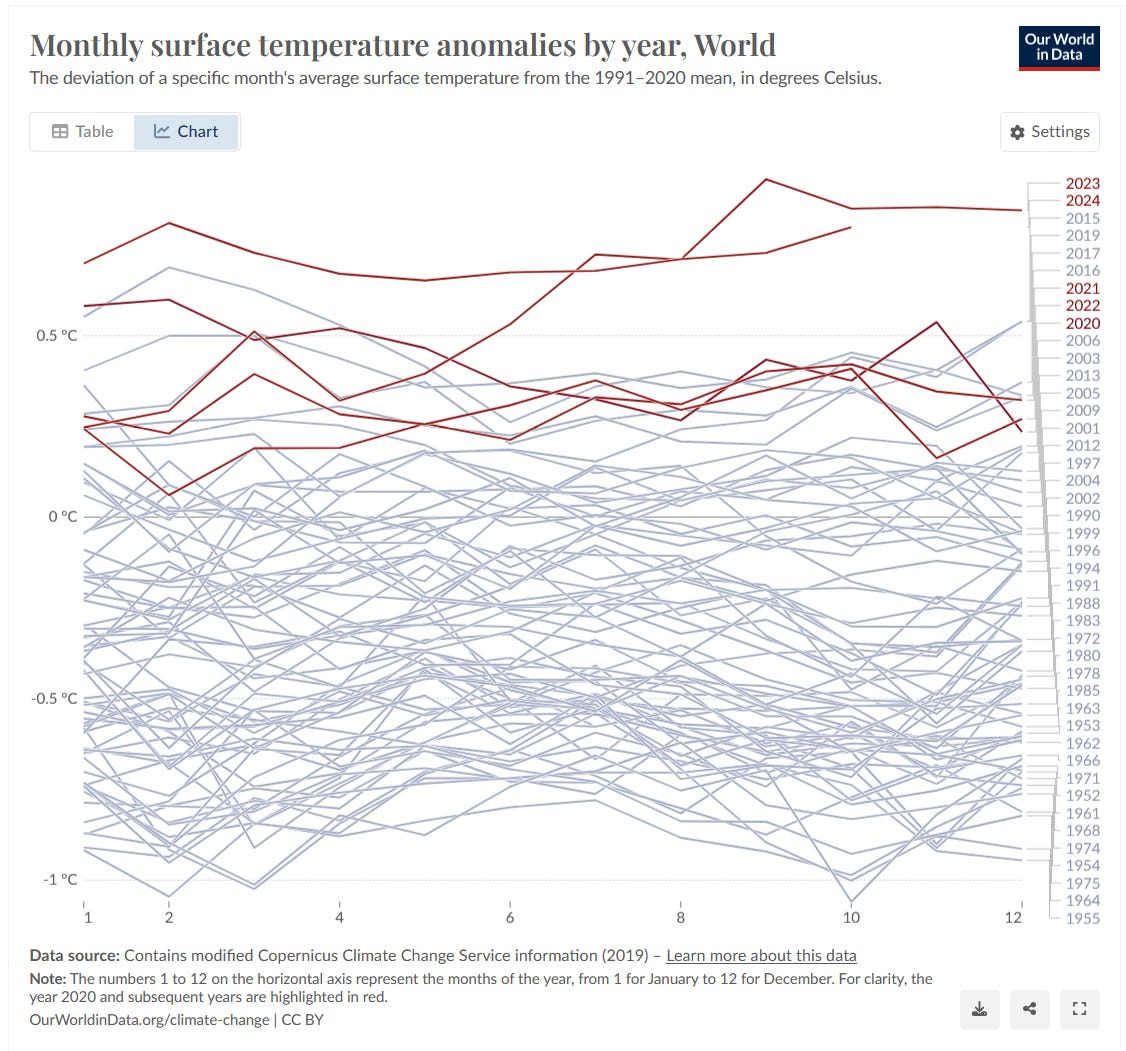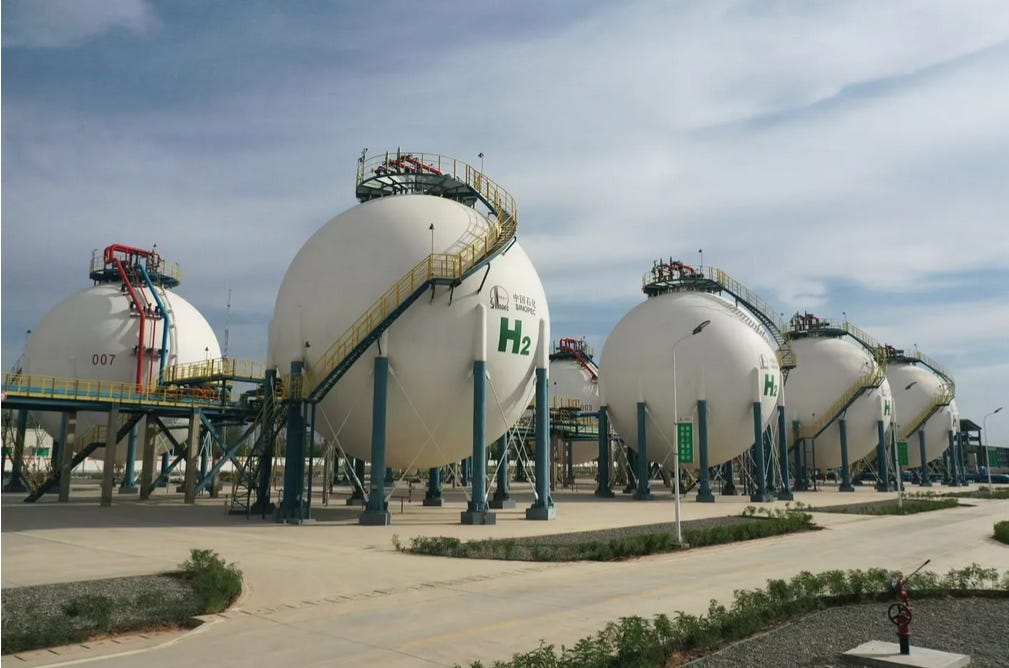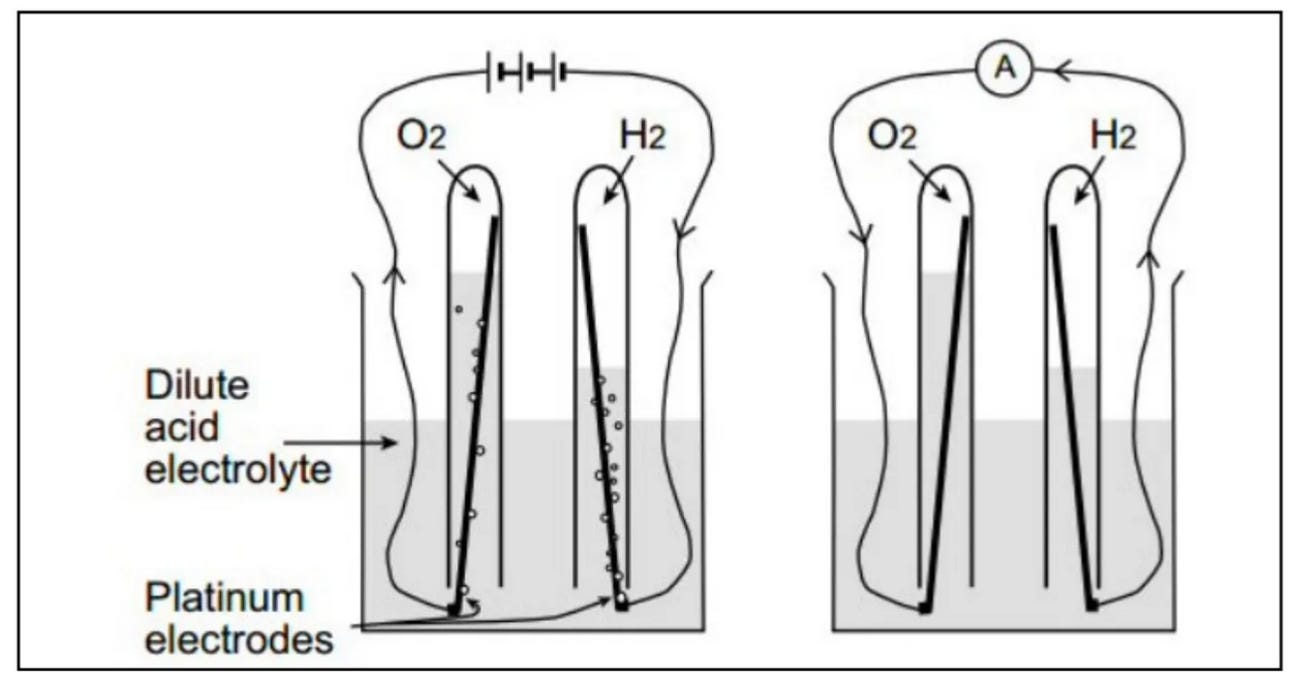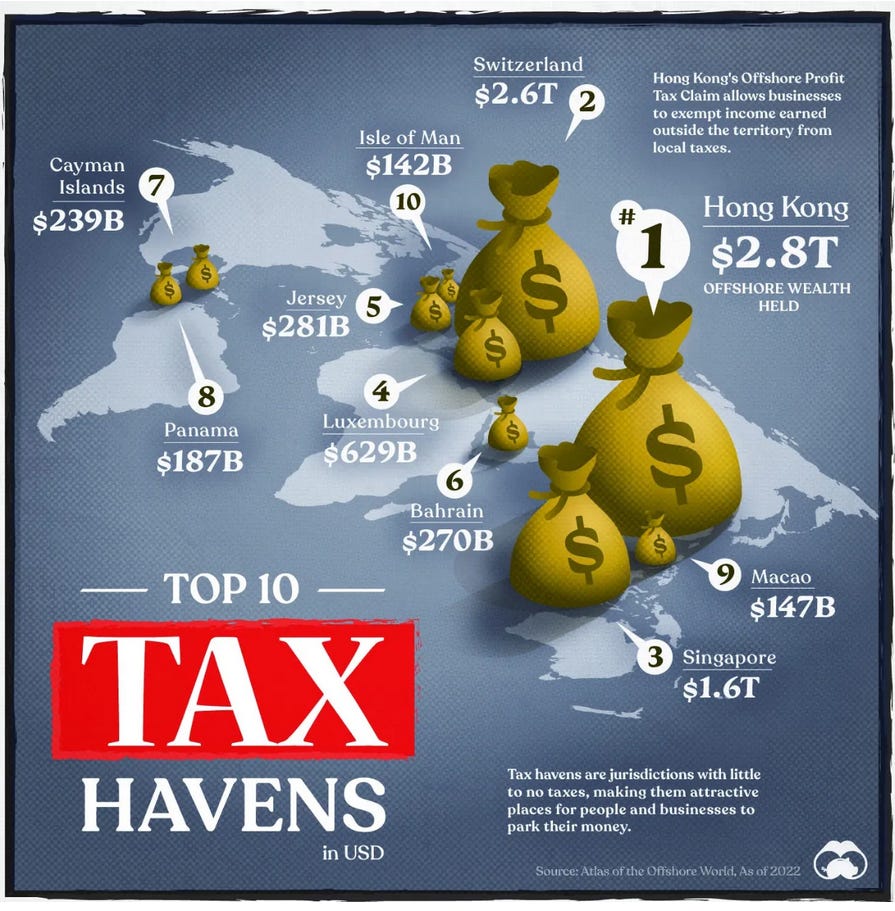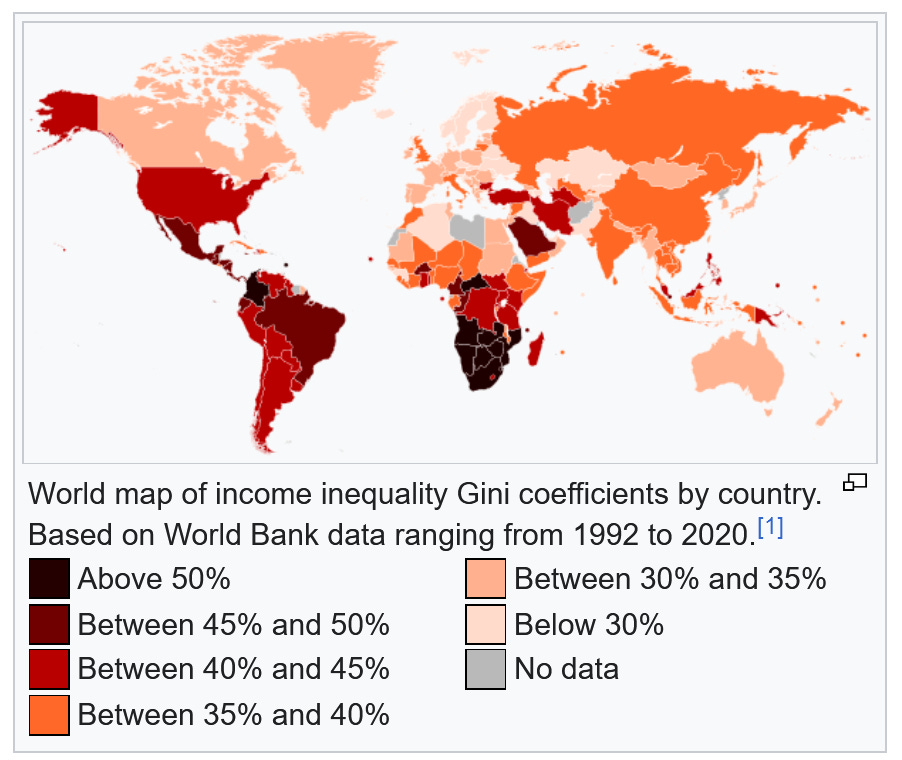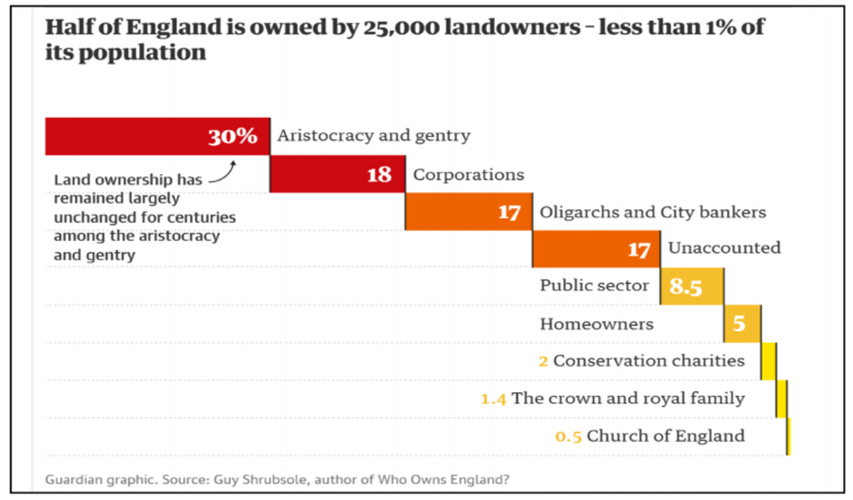Back in the 1950s when I was still yet to be a teenager, I would disobediently keep my bedroom light on to read into the night: one night I hadn’t noticed that a small window was still open. Within a minute the room was infested with moths and other insects. Later, in the 1960s, I would be driving between London and South Wales, a four to five hour journey before the motorways, the front of my car on arrival would be plastered with dead insects. I would take a walk up into the hay field the next morning to lie back in the grass and watch and listen to the skylarks. None of these things could happen today. Where have they all gone? Exterminated by agricultural poisons – insecticides – as forecast by Rachel Carson in Silent Spring, in 1962. Skylarks, you see, fed on a diet of insects.
And not just animal life: more than one in three species of trees is at risk of extinction worldwide, according to a recent report published in an update of the International Union for Conservation of Nature Red List of Threatened Species, among them the Gingko, perhaps the earliest remaining tree species, which has survived virtually unchanged and unthreatened for 200 million years, until, that is, it met our generation. The biggest remaining plantation is of some 8,000 trees in the north of Guangdong province, China, in the small town of Nanxiong, where they line both sides of the main street, an amazing sight when they fruit and the leaves turn golden yellow in October. This mass culling of nature has been described as the Sixth Extinction, and is distinct from the previous five in being entirely engineered by the human race.
This is Nanxiong, in October 2023.
I have called this posting a draft, because I want to throw it open for comments and suggestions for inclusion in the final version. I already have included recent ideas and reports from three others, and ultimately the final document, a manifesto, will be open to supporters to append their names.
So many complex matters interacting with one another, so where to start? But gradually I came to see that it is necessary to address two major underlying problems and then with a bit of agility, the rest can fall into place. They are to stabilise, then reduce the world population, and to arrange that all energy requirements are supplied by clean electricity and renewable fuel. The following diagram should convey the urgency of the matter: the global mean surface air temperature was 1.54 C above the pre-industrial average from January to September this year. World leaders and scientists set 1.5 C as the dangerous red line at the United Nations Conference of the Parties (COP) in Paris in 2015 — a figure adopted by 196 countries.
To make a start, then:
World population. Currently about 8 billion and expected to reach 10.4 in the 2080s (elsewhere however, I read that the population of Africa alone will grow from 1.5 billion today to 2.5 billion in 2050 and 4.2 billion in 2100). Reading back through historical writing, we seem to have already arrived at about the average of an admittedly wide range of estimates of the maximum that the planet can withstand, and I assume that it accepts that a reasonable standard of living is available for all at that level. It seems unwise to bang our heads against the ceiling, so I suggest an aim to reduce the population to two billion – the total as recently as 1927 – and stabilise it at that point. A quarter of the population means a quarter of the stress on the ecosystems, all other things being equal, so that seems a valuable place to start.
Electricity, and clean fuel, the power sources. First, the use of petroleum and natural gas as fuels must cease as soon as possible. The principal source of electricity must be nuclear fission power, and nuclear fusion (1) must eventually be brought on line to replace it as it really would be an almost inexhaustible source of power with little radioactivity, nuclear waste or air pollution. These would be supplemented by solar, wind, and hydro where possible.
Clean electricity can then be used to provide hydrogen as a gaseous source of energy (2) by electrolysis of water, which can be burned as a heat source, or converted back to electricity in fuel cells (3). Carbon dioxide evolution is then eliminated as hydrogen when consumed ends up merely as water. Manufacture of steel is responsible for some 8% of carbon dioxide emissions: hydrogen can replace coke in the blast furnace eliminating carbon dioxide formation and release iron, to make what is being referred to as “green steel”.
Before I go any further I need to address climate change sceptics. Nobody can deny climate change: exceptional weather somewhere in the world is now an almost daily occurrence, the Philippines, for example, has just experienced six violent storms in the past month which have left at least 163 people dead, thousands homeless and wiped out crops and livestock. But some doubt that climate change is the result of human activities. I disagree fervently with their point of view but don’t wish to engage with that discussion here and will give four further reasons to support this thesis.
- We are approaching peak oil, supplies will diminish, cost will rise, much essential transport will eventually become unviable.
- Scarce resources mean international friction, leading to regime change, and wars, possibly, eventually, nuclear.
- Cleaner air in badly polluted cities. Most of the pollution comes from burning fossil fuels. Shenzhen traffic, for example, is heading to be almost entirely all-electric, including millions (and I honestly don’t think that is an exaggeration) of electric scooters which take the place of the hordes of noisy, smelly petrol driven motor cycles seen in many countries, leading to cleaner air and almost total silence.
- Stripping the power and influence of the oil giants. Fossil fuels benefit from colossal subsidies: the IMF calculated that total support for oil, gas and coal in 2022 amounted to $7 trillion.
Let’s take a deep dive now.
Population Control
Only one nation has taken a serious attempt and that of course is China with their One Child policy (although it was relaxed for the 56 ethnic minorities, you know, the list which includes the one they have been genociding, the Uyghurs, they were all allowed up to three). I dealt with that in some detail here:
https://waltking.substack.com/p/china-today
so I will just briefly say that the intention starting in 1979 was to stabilise at 700 million, in fact it has been relaxed now for everyone and it has stabilised at 1.4 billion, and China’s population was overtaken recently by India. So it can be done. It has to be said it was quite brutal, but then you have to break eggs to make an omelette. But solve one problem and create another. Realising that the demographic balance was being shifted so that fewer younger people were having to support more and more of the aged, the policy went sharply into reverse in 2016, and the entirely unexpected outcome of first raising the limit to two and then three is that it has not produced the desired result whatsoever, and there have actually been slight falls in the population in the past two years, during which 20,000 kindergartens in China have been closed, and are being converted to providing services for old people. The fact of the matter is that as people’s standard of living rises their need and desire to have lots of children diminishes, this is happening throughout the richer countries.
So it seems that introducing population control raises two particular issues that have to be addressed.
1. The poorer nations consequently have the high birthrates for a variety of reasons: infant mortality can be high, there is a need within poor social systems for offspring to support parents in their old age, the poor cannot afford contraception, and there is Catholicism. The answer is clearly to raise the standard of living in such countries. By way of example, I shall refer to the mainly Catholic Philippines. I have dealt with it in detail here:
https://waltking.substack.com/p/the-philippines-the-next-ukraine
but will just give an inkling here. In 1959 the population was 19 million: today it is 116 million. What on earth will it be in 2050 if nothing changes? It is a failed state, its “democracy” is a joke, poverty is rife, corruption reigns, many children suffer malnutrition and health services are poor, educational achievement worse, and living standards are in many places unbelievably primitive. Catholicism is of course the underlying driver of population growth: it is so powerful there that it is the only country (apart from the Vatican, if you can count that) where divorce is illegal.
How to improve poor countries standard of living? Joining BRICS would be a good start.
2. The demographic problem is doubled because not only is the old/young ratio increasing, but age expectancies continue to rise in many countries. In the early days of state pensions, retirees could expect only a few years of pension, but now someone retiring at 65 can generally expect ten years or more. How to fund that increasing burden? Well one way would be to look some of the biggest portions of current state expenditure. “Defence” for example.
Let’s look at that wretched old colonialist, the United Kingdom. Defence budget, 55 billion pounds, 11 million people over 65. That 5,000 pounds a year, $6,500 for each. Where does all that money go given that the army could fit in an average football stadium and the few remaining navy ships are mostly unfit for service? Perhaps it’s the bases in seventeen countries? And who in their right mind wants to invade the UK? But the Labour government while proposing 200 billion to renew its nuclear weaponry is withdrawing winter heating allowance for most pensioners and is supporting a bill to make suicide legal. There are so many miserable people now in the UK, that should certainly reduce the elderly population.
I thought it would be worth comparing with China. I am not suggesting that China should curtail spending on the military just now with the constant talk of war from the Evil Empire, far from it, but anyway it’s $231 billion with 200 million over 65, so that’s $1,155. Let me check that. Yes it is. And per head of total population, Britain spends $1,000 to China’s $161. It’s enough to point out at this stage that a new world order leading to a new era of world peace would, among other benefits, save an enormous waste of resources, not least, the bulk of the US budget now approaching $1 trillion, equal to the defence expenditure of the next seven nations. Defence, did I say? So who, then, is threatening the USA? Just imagine what that money could do if in the main it was spent on useful purposes.
In the short term, I think retirement ages need to be raised, perhaps to 70. China is tentatively raising over the next 14 years but only really to matching western current norms. Perhaps they will have to think again. But these measures are not going to be sufficient to realise a needed drastic cut in population: and for the further proposal I am indebted to Debbie, an MoA contributor, for the following programme proposal published on October 17 2024:
“A comprehensive global policy under an emergency legally binding United Nations direction would include:
A legally binding, global one-child-per-family policy.
Prioritizing universal women’s rights, with education programmes focusing on smaller families and the importance of choosing not to have children.
Universal access to contraception and safe abortions for all.
Halting immigration to wealthy nations with high per capita energy and resource consumption, particularly in the Western world.
This is a global crisis that requires a universal response rooted in science and mathematics, not emotional or power-driven ideologies or nationalist exceptionalism.”
To which I would add means-tested free or subsidised contraception. I fully agree with her and also, as I gather, her sentiment that if nothing is done, a solution will impose itself by one or more means, none of which will be pleasant.
Power
So it’s electrification of virtually everything currently fossil fuelled. Power generated as set out above.
Petrol driven motor cycles: switch to electric scooters (already the standard daily transport for much of China). Battery electric.
Cars and light commercials. Battery electric. Heading that way. Coming soon, hydrogen fuel cells.
Trains. Electric, overhead supply, high speed (350+ kph) will abolish the need for drastically inefficient short haul flights. I had not realised before, the reason is that a massive amount of fuel is expended at take off so short flights do not trade this off across an extended flight distance. Higher rail speeds are likely eventually, too, bringing more distant destinations within their orbit.
Buses, short local journeys, battery. All in Shenzhen are BYD electric.
Heavy goods, long distance buses. Batteries probably unsuitable, but they have the capacity to carry substantial hydrogen storage (hydrogen gas has to be held under intense pressure which necessitates a very strong container). So hydrogen fuel cell.
Medium haul flights. Hydrogen fuel cell possibly up to 3500 km, by 2040. Or else…
Long haul flights. This one really surprised me. I thought air travel was a major user of hydrocarbons but it is responsible only for 2% of global emissions. The target is net zero by 2050. I was also surprised to learn that work here is concentrated on switching to Sustainable Aviation Fuels (SAFs). These are fuels obtained from plants and other organic sources, so they do emit carbon dioxide, but the carbon has previously been removed from the air during the growth of the plant and so it is just being recycled. Currently 0.1% of aviation fuel is SAF, the target is 10% by 2030. One objection to this route is that it likely to be sourced from vegetation such as the palm oil tree which is now responsible for the mass destruction of primeval forest to create vast plantations of that single crop. On a recent journey from Singapore to Bangkok across Malaysia by road and rail I thought we were passing through endless jungle, until I noticed that the trees were all planted in rows! Yes, they were palm oil, also coconut and rubber.
Shipping would need the development of heavy molecular SAFs to replace diesel fuel.
Reading this section back I admit that there is little really new there, and in fact various dates have been set (such as 2050?) for net zero emissions. My only question is, given that most of the above technology exists today, why must we wait so long?
Decarbonisation of the atmosphere
In the same way that I believe the world population has exceeded its optimum level, I feel that the carbon dioxide level in the atmosphere would best be reduced, back to 400 ppm as an initial target, if that were possible. Mass reforestation would help, but tree growth is too slow to make an immediate impact. Can our old friend chemistry come up with a solution?
If we are to seek a chemical remedy then the first problem we face is the size of the sample – nothing less than the entire atmosphere. So we need a large reaction zone with a large atmosphere-facing area. I propose that we cordon off large fresh water lakes all over the world that are not being used as reservoirs as reaction vessels. Next we might need a chemical reagent in the water, and possibly a soluble catalyst to encourage the reaction. Water would be pumped off, the reaction product removed, and fresh reactant added and returned. Fairly standard chemical engineering. But think as much as I could, I could not come up with a suitable simple ambient temperature inorganic chemical reaction. Finally the obvious thought eventually sprang into my mind: photosynthesis!
What we would need is a very fast growing water-surface residing plant. Genetic engineering could work to improve its photo-synthetic efficiency, naturally plants are only about 3% to 6%. Fertiliser would need to be added to the lakes initially, in large quantity. The growth would be continuously raked back and the plant product processed to separate the stored carbon present as sugars, cellulose and starch, to be put to use (animal feed?) or put into long term storage, and the remainder to recover the necessary fertiliser to be returned to the water.
Having read that back it occurs to me that such a project could be performed on land, but it would take a lot more organisation and would diminish the existing stock of agricultural land so I’ll stick with the original proposal.
“A bit of agility”
Another correspondent and MoA frequenter Tom Pfotzer has been working on the issue and writes:
The Imperative. Up until now, humans have degraded the environment as we make our living. When the immediately-accessible resources are exhausted, people move elsewhere, and repeat the degradation cycle there. Migrations and wars are examples of “moving elsewhere”. For the first time, we are facing planetary limits to “moving elsewhere”. This is the first time in human history when “moving elsewhere” is not possible.
My aim toward a drastic reduction in population would merely reduce and not eliminate environmental degradation. He goes on to say:
We must now change our very nature; we must learn to make our living as we fix the planet. We have to change deeply fundamental traits of humans – which have millions of years’ worth of physiological entrenchment – in a few short decades.
I guess we should start by defining perhaps the basic aims and then see what problems emerge and then how to overcome them. I can come up with three.
1. An adequate standard of living for all.
2. World peace.
3. Minimal impact on the environment.
Let’s look at each in turn.
1. An adequate standard of living for all
We must work towards a basic minimum standard of living within all nations. Excess wealth must be taxed and the taxation (4) used to reduce the burden of poverty and provide appropriate health services free at point of use, similarly free education (to include free school transport: we met an intelligent young boy with a good command of English in the Philippines whose family could not afford his fare to school) and abolition of private education. Housing, an appropriate mix of social and private of good quality, a nutritious diet and a minimum of a living wage for employed and unemployed.
Whereas the power revolution can be achieved more or less with current technology, hopefully before runaway temperature rises take place, the installation on a world scale of population control (even if it could possibly be achieved) will be accompanied by side effects as was first realised by China in the form of the unbalancing of the age demographic. This too must be addressed by taxation.
2. World peace
World peace, at a time when World War Three is being threatened, is a major environmental concern with nuclear warfare currently a real possibility, and the development and manufacture of armaments is a colossal waste of resources. This is not the place for a detailed discussion, but many wars arise out of a desire to obtain critical supplies – oil is an underlying cause of endless turmoil in the Middle East, with Israel, the USA’s aircraft carrier, always at the centre of the mayhem. A smaller world population to reduce demand and a move away from the use of oil would calm the region, although the dissolution of the state of Israel and restoration of a historic Palestine population comprising all religions or none would also be a just necessity.
We are living through a time when “the old order changeth” with a cooperative Global South prising the reins from the United States and its satraps. We can only hope that the change occurs without escalating into nuclear war, and that we can reach a point where agreement can be reached to dispose of nuclear, chemical and biological weapons. The United Nations as a body has outlived its usefulness with a small self-privileged minority armed with a veto which can prevent desperately needed change. A new body with equal rights for all nations is the only acceptable outcome and BRICS is perhaps a move in that direction. Meanwhile the “Garden” is doing a fine job of destroying itself.
3. Minimal impact on the environment
Addressing the cumulative harm to the environment will have consequences for the way economies are organised. A wide range of measures springs immediately to mind.
Scrap planned obsolescence: capitalism is driven by an opposition to long lived products and constant striving to persuade consumers that their current devices need replacing, resulting in colossal waste and scrap. However, this would result in virtually no sales once the initial requirement is fulfilled, and corresponding business failure. Perhaps a solution would be to give some of the products away and charge rents, and those workers then unemployed developing and manufacturing new products? On a broader scale, is economic growth necessary once a satisfactory standard of living has been achieved for all? Could civilisation work with zero growth? I do not understand economics so I cannot answer that question.
Home working: Covid restrictions showed that mass transportation daily is actually unnecessary for many jobs.
Make single use plastics (5) illegal or heavily tax them, use compostible/biodegradeable materials or reusable containers instead.
Establish minimal legal standards for energy efficient buildings.
Organic agriculture: use of pesticides and artificial fertiliser must be minimised. A smaller world population can live with reduced yields.
Recycling must be standard procedure, goods which could be recycled but aren’t must be taxed. When I was a child, all soft drinks came in glass bottles on which a deposit was charged. You took the bottles back and got your money back. Crates of empty bottles would be picked up on deliveries and returned to the manufacturer for re-use. Perhaps biodegradeable plastics would be an acceptable alternative in many cases, unless they become litter.
CONCLUSION
The human race is at war, both with itself, and the environment. I think it unlikely that it has the sense to avoid either or both catastrophes. This manifesto can be developed and produced with the assistance and agreement of a legion of thinking people: ultimately, perhaps it will be renamed “A Survivors’ Handbook”.
Your comments, suggestions, welcome.
…………………………………………………………………….
APPENDICES
1. Fusion power
Fusion adopts the energy system of the sun, a slowed down version of the hydrogen bomb, the combination of hydrogen atoms to form helium with the release of great heat energy. ZETA was an early demonstration carried out at the Atomic Energy Research Establishment at Harwell in England in 1957. This created much interest and gained much publicity, but the following year amid great embarrassment it had to be admitted that fusion apparently had not been achieved. I remember at the time that it was said fusion power was 50 years away, and that still seems to be the case. Now fusion has been achieved, but not net power, that is to say that more energy is being put in to sustain the necessary environment than is achieved in power generation. Today, many countries take part in fusion research to some extent, led by the European Union, the USA, Russia and Japan, with vigorous programmes also under way in China, Brazil, Canada, and Korea.
2. Hydrogen gas as a fuel
China, having invested massively in lithium batteries which world market it now dominates, is turning attention to hydrogen fuel cells. Ying Xue writes:
This Sinopec Xinjiang Kuqa Green Hydrogen Demonstration Project is currently the world’s biggest and the first of such a production capability. It produces 20,000 tonnes of hydrogen annually, only by consuming solar power and water, with no emission at all. It is magical, right?
We have more and more cars and industrial vehicles now using hydrogen power. Cars with 5 kg hydrogen can run about 500 km. It means the hydrogen produced by this plant can drive 4 million cars to run 500 km theoreticaly, and totally without emission.
By producing 20,000 tonnes of hydrogen as energy through water electrolysis can reduce CO2 emission by 485,000 tonnes. If we plant 300,000 trees, they can absorb such amount of CO2. So this plant equals to 300,000 trees, in CO2 emission reduction.
Sinopec has built 128 hydrogen refilling stations along highways linking Beijing and Tianjin, Chengdu and Chongqing, Shanghai and Jiaxing and some other cities.
3. Fuel cells
The fuel cell principle was first demonstrated in Swansea, a few miles west of Cardiff, Wales (my home country!), in 1839, by William Grove, who now deserves to be better known.
When an electric current is passed between two metal strips (electrodes) dipped in some water-based fluid (electrolyte), the particles of water (molecules) are broken up into their constituent parts, namely hydrogen (at the negative electrode) and oxygen (at the positive electrode) – below, left. The symbol at the top of the circuit diagram is the battery powering the process. See the bubbles of gas being formed.
This process is known as electrolysis and had been extensively studied by scientists in the previous decades by Faraday and others. What Grove achieved was to show that the process was reversible (above, right), that is to say, if hydrogen (the fuel) and oxygen (or air) are passed separately over a pair of certain metal electrodes immersed in an electrolyte, an electric current could be observed when wired together. Note now at the top we see an ammeter to measure the electric current. So it is, in effect, a battery in which the reactants have to be continuously supplied to realise an electric current, and the end product is merely water.
This phenomenon was then virtually ignored for over a century until it was revived by Francis Thomas Bacon in work at Cambridge University, and successfully applied in the first moon landing spacecraft, the Apollo 11, in 1969. It inspired a spate of work into development of fuel cells for power use, which faded quickly as the problems seemed insuperable (however it sparked the development of chemical sensor industries producing millions of miniature fuel cell components annually and fitted in, for example, the breathalyser). Fuel cells as a power source are now on their second revival, and I think that this time they will succeed.
[I need to insert some additional information here about the electrolysis of water. The process requires, theoretically, from 1.23 volts to be initiated. But inefficiencies mean that a much higher voltage is needed. The hydrogen electrode reaction is very efficient on platinum electrodes and requires very little additional voltage, but the oxygen electrode is not so and the required applied voltage will likely exceed 2 volts, wasting energy. So research is needed to realise an efficient oxygen evolution electrocatalyst. The material needs to be electrically conducting and in a high oxidation state or it will quickly be oxidized in use. Semiconducting mixed metal oxides would be a good place to start. The evolved oxygen, presumably, can be put to some use.]
4. Taxation: tax havens, the Land Tax, etc
In order for taxation to be fairly distributed, I was thinking that tax havens need to be be abolished. Then I found the diagram below. I was surprised to see Hong Kong at the top of the list. Read the small print above the symbol, and I will explain.
Foreign companies wishing to export into China find it useful to set up a subsidiary in Hong Kong which eases cross border payments. We did so in 2008. We also use the company to receive payments from other east Asian companies in Hong Kong itself, Japan, South Korea, Taiwan, and Vietnam. Hong Kong just taxes profits received within Hong Kong itself. It doesn’t look to tax income from outside countries (not even China). But if you want to get that profit home, you will have to pay tax in your home country when you bring it back (in the UK, at least – other countries may have double tax agreements, it’s their choice). So it’s not tax evasion.
There is no escape. Your HK bank will want your TIN and every transaction is recorded and available to your home tax authority. Company accounts must all be professionally audited. Hong Kong is listed above merely because of its low tax on home derived profits. The idea that Hong Kong is a tax dodging entity is a fantasy. Anyway the UK government tore up its Double Tax agreement with Hong Kong in 2019 as part of its mounting Sinophobia, so now the only way for UK companies to use their Hong Kong subsidiary, while continuing to export to entities outside its jurisdiction, is to export to Hong Kong customers directly from home base, thus avoiding double taxation on that potential income.
So what are referred to as tax havens are no more then than sovereign countries setting their own tax rates. A far more interesting source of information is the EU list of Non-Cooperative Jurisdictions for Tax Purposes. These are the ones that presumably will NOT reveal your concealed wealth to your home tax authority. They make interesting reading:
American Samoa, Anguilla, Fiji, Guam, Palau, Panama, Russia, Samoa, Trinidad and Tobago, The US Virgin Islands, and Vanuatu. Antigua and Barbuda were just removed in October 2024. Hong Kong is listed as a fully cooperative entity.
You will have noted that I have suggested selective taxation as a solution to many problems. Intelligent taxation would be a very effective method of diverting public conduct into the desired directions. It would also be a very useful source of finance in countries with high Gini coefficients.
Zero is perfect equality so the lower (lighter shading in the diagram) the better.
By way of example I will illustrate this point by referring to the Land Tax. This would particularly apply to the UK but there are other countries where it could be effective too. Argentina is one and other South American countries possibly also, apparently the Catholic church is a massive landowner there.
Did you know that there used to be a Land Tax in the UK? Land taxes had been in place for a thousand years until abolished by the Finance Act 1963, the year Sir Alec Douglas Hume (pal of the Scottish grouse moor owning fraternity) succeeded Harold Macmillan as prime minister, himself being booted out the following year by Harold Wilson.
It was never reinstated, not even by Labour governments!
Did you know that half of England is owned by fewer than 1% of its population?
Major owners include the Duke of Buccleuch, the King, several large grouse moor estates, and the entrepreneur James Dyson. Also prominent on the list are the Woburn estate, which is owned by the Duke of Bedford, and the Badminton estate in Gloucestershire, owned by the Duke and Duchess of Beaufort. In 2023 alone, King Charles and Prince William’s “private fiefdoms,” the Duchy of Lancaster and the Duchy of Cornwall, raised £27.4 million (over $35 million) and £23.6 million ($30 million) respectively for the British royal family.
“A few thousand dukes, baronets and country squires own far more land than all of middle England put together.”
Guy Shrubsole in Who Owns England estimates that “the aristocracy and gentry still own around 30% of England”. This may even be an underestimate, as the owners of 17% of England and Wales remain undeclared at the Land Registry, the public body responsible for keeping a database of land and property in England and Wales. The most likely owners of this undeclared land are aristocrats, as many of their estates have remained in their families for centuries. Some were given to their ancestors after the defeat of England in 1066 and have remained so ever since. It seems a poor reason for it still to be in their hands almost a thousand years later.
“How did you acquire your land?”
“My ancestors fought for it”.
“OK, I’ll fight you for it!”
As these estates have never been sold on the open market, their ownership has never been recorded at the Land Registry. All such unregistered holdings should simply be confiscated as their ownership cannot be proven, and ownership transferred to the state.
“We have this idea that the class structures have changed so that the aristocracy is not as important as it used to be. What this demonstrates is the continuing importance of the aristocracy in terms of wealth and power in our society.“ Shrubsole.
A very high tax should be set for very large registered landholdings, alongside the offer to buy at a much reduced rate, and hence much land could be nationalised and brought under public control. There should be concessions, for example for productive agricultural land operated by the owner.
The EU has just announced a proposal to introduce a Frequent Flyers Tax which would ramp up with successive flights within a year.
5. Single use plastic
1. Look closely at this display photographed at Cebu airport, Philippines. Note that some 90% of the products are wrapped in single use plastic.
- The scene below was photographed a short distance from the location of the previous photo. It shows typical Philippine slum residences standing over water which have no services and all their rubbish ends up in the sea, so that the Philippines is reckoned to be the number three world source of plastic junk in the oceans.
You may think that waste plastic in the environment is unsightly but otherwise of little importance, but you would be wrong. Standard plastics are virtually indestructible in the environment, except to say that they are broken down into tiny fragments known as microplastics. Such particles are also deliberately placed in cosmetics, although there are moves now to limit their use. These particles now infest the oceans, the air we breathe, and are actually being stored in your body. There is considerable concern about possible health risks. In 2022, the total direct economic losses from marine plastic pollution to the fishing and shipping industries in the Asia-Pacific region reached USD 10.8 billion, nearly a tenfold increase compared to 2009.
There was a piece in the Manila Times recently saying that the Philippine government will penalise industries dumping such waste, but the visible evidence there is such that it is domestic waste, mainly food wrapping and plastic water bottles littering land and sea. I don’t think the inhabitants notice it.
Single use non-compostible/biodegradeable plastics must be outlawed and further research (6) is needed to produce cheap easily compostible/biodegradeable plastics.
6. Priority research projects
i. Improved nuclear fission, and fusion.
ii. Electrolysis of water: a more efficient oxygen evolution electrode. Also an efficient electrode material cheaper than platinum for the hydrogen evolution electrode.
iii. Decarbonisation of the atmosphere, to include synthetic photosynthesis.
iv. SAFs.
v. Hydrogen and other non-carbonaceous fuel cells.
vi. Cheap compostible/biodegradeable plastics.
vii. Ultra high speed trains.
viii. Faster charging batteries.
EDITOR
Dr Walter J King: Wales
CONTRIBUTORS
Tom Pfotzer: USA
Debbie: ?
Ying Xue: China
You may see more of the Gingko tree in Nanxiong here at 7.58:
https://rumble.com/v5oti3q-china-shixing-guangdong-province.html











